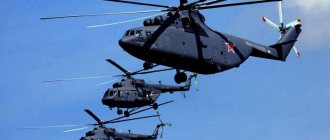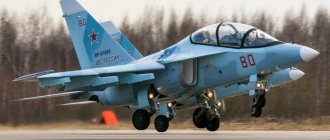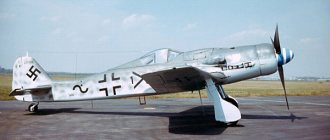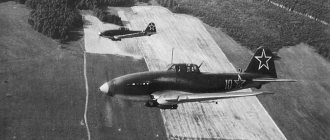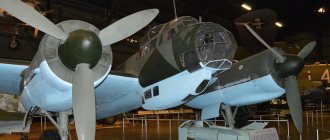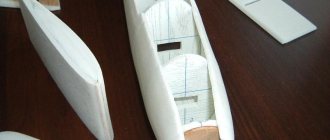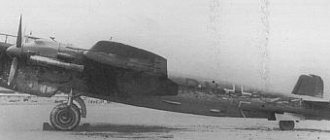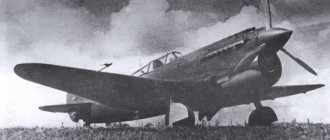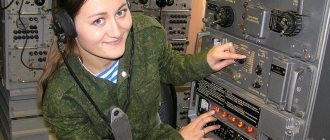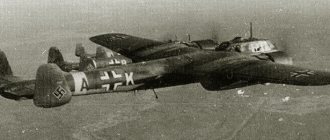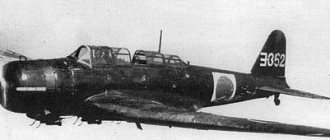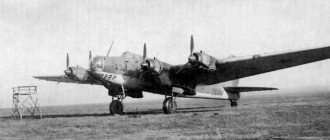The history of Soviet civil aviation has many glorious pages, one of which is the TU-134 turbojet airliner - one of the most mass-produced aircraft in the Soviet Union. It had many unofficial names, including such as “stupid”, “hip” and even “whistle”. Until recently, it could often be found on local airlines, despite the fact that it was developed back in the 60s.
A beautiful and comfortable aircraft for its time, it is the pride of the domestic aviation industry.
History of creation
The beginning of the 60s marked the massive entry of civil aviation into the era of jet engines. At this time, domestic flights in most cases were served by Il-14 piston aircraft, which by this time were already obsolete. In addition, the passenger capacity of these aircraft left much to be desired - 36 people, given that the number of people using air travel was only growing.
At that time, Aeroflot's fleet already had several models of jet aircraft, in particular the TU-104 and TU-124. The first was successfully used on international lines and heavily loaded domestic lines. The second one was used quite successfully, both in local and foreign directions.
Creation and testing
Legend has it that the aircraft owes its creation to Nikita Sergeevich Khrushchev. The year 1960 was marked by the introduction of a new French airliner, the Sud Aviation Caravella.
One of its differences from existing Soviet models was the location of turbojet engines in the tail - this design significantly reduced the noise level in the cabin, which naturally affected the flight comfort.
Returning from France, Khrushchev gives the task to Tupolev’s experimental design bureau to develop a domestic analogue of the machine.
The initial plan of the designers was to modernize the already mentioned TU-124. To achieve the set goals, the length of the fuselage was increased, the engines, accordingly, took place in the tail section of the aircraft, and instead of the standard tail, a T-shaped one was installed.
In 1961, design work was completed and, given that the design was based on another machine, it initially received the marking TU-124A. Two prototypes were completed by 1963, and their flight tests began in the summer of that year. The aircraft received the designation Tu-134 in 1965, and a year later its serial production began at HAPO.
By the way, in parallel, the development of a similar machine was carried out in other countries - England and the USA.
During testing, a disaster occurred with the English prototype, which introduced the world aircraft design community to the concept of a “deep stall.”
With it, behind the wings, during a high angle of attack, an area of shading of the air flow is created, into which the elevators also fall, as a result of which they can no longer influence the flight state. Removing the aircraft from such a position is extremely difficult, and in some cases almost impossible.
Some features of the first models
When designing the cabin, it was initially calculated that the number of passenger seats would be 56 in a regular configuration and 50 in two classes. For intra-union versions, the decision was made to abandon the first class for a number of understandable reasons. Thanks to this, the number of seats was increased to 72. Subsequently, the division into classes was returned to most aircraft.
There are versions with both first class and business class seats.
The first copies, including 9 pre-production versions, did not have reverse on the engines, as a result of which the landing mileage was a serious value, which in turn placed corresponding demands on the GDP.
Initially, they wanted to solve this problem by installing a special parachute that would be used when the aircraft touched the ground (a similar system was implemented on the TU-104). But this idea did not find positive feedback from the management and the problem was partially solved by placing special brake flaps under the center section.
Commissioning and first modifications
Aeroflot received its first TU-134 in 1966. A year later, the first commercial flight of this airliner was registered as part of the airline - Moscow-Adler. Despite the fact that the aircraft was developed specifically for domestic short-haul routes, until the summer of 1969 it performed exclusively international flights.
On intra-Union routes, it first served flights Moscow-Kyiv and Moscow-Leningrad.
At the same time, sales of cars to socialist countries began: in 1968, a batch of TU-134s was sent to the GDR for the local airline Interflug. By the way, it was in the West that the aircraft received the nickname “devil of the skies” for its excellent flight characteristics. How one is connected to the other is still not entirely clear - each nation has its own logic.
In 1970, the first modification of the aircraft appeared, which received the index “A”. It received a number of critical improvements, including:
- installation of reverse, the so-called reverse braking thrust, on power plants;
- refusal of the brake flap (due to its uselessness);
- fuselage extension by 2.1 m.
The latter made it possible to place 4 more seats in the cabin, thus increasing the total number of seats to 76. These changes also affected the flight range of the TU-134A - it decreased from 3100 to 2770 kilometers.
An excerpt characterizing the Tu-134UBL
Just as in a clock the result of the complex movement of countless different wheels and blocks is only the slow and steady movement of the hand indicating the time, so the result of all the complex human movements of these 1000 Russians and French - all the passions, desires, remorse, humiliation, suffering, impulses of pride, fear , the delight of these people - there was only the loss of the Battle of Austerlitz, the so-called battle of the three emperors, that is, the slow movement of the world historical hand on the dial of human history. Prince Andrei was on duty that day and constantly with the commander-in-chief. At 6 o'clock in the evening, Kutuzov arrived at the main apartment of the emperors and, after staying with the sovereign for a short time, went to see Chief Marshal Count Tolstoy. Bolkonsky took advantage of this time to go to Dolgorukov to find out about the details of the case. Prince Andrei felt that Kutuzov was upset and dissatisfied with something, and that they were dissatisfied with him in the main apartment, and that all the persons in the imperial main apartment had the tone of people with him who knew something that others did not know; and that’s why he wanted to talk to Dolgorukov. “Well, hello, mon cher,” said Dolgorukov, who was sitting with Bilibin over tea. - Holiday for tomorrow. What's your old man? out of sorts? “I won’t say that he was out of sorts, but he seemed to want to be listened to.” - Yes, they listened to him at the military council and will listen to him when he speaks his mind; but it is impossible to hesitate and wait for something now, when Bonaparte fears more than anything else a general battle. -Have you seen him? - said Prince Andrei. - Well, what about Bonaparte? What impression did he make on you? “Yes, I saw it and was convinced that he was afraid of a general battle more than anything else in the world,” Dolgorukov repeated, apparently valuing this general conclusion he had drawn from his meeting with Napoleon. – If he were not afraid of battle, why would he demand this meeting, negotiate and, most importantly, retreat, while retreat is so contrary to his entire method of waging war? Believe me: he is afraid, afraid of a general battle, his time has come. This is what I'm telling you. - But tell me how he is, what? – Prince Andrey asked again. “He is a man in a gray frock coat, who really wanted me to say “Your Majesty” to him, but, to his chagrin, he did not receive any title from me. This is the kind of person he is, and nothing more,” answered Dolgorukov, looking back at Bilibin with a smile. “Despite my complete respect for old Kutuzov,” he continued, “we would all be good if we waited for something and thereby gave him a chance to leave or deceive us, whereas now he is surely in our hands.” No, we must not forget Suvorov and his rules: do not put yourself in the position of being attacked, but attack yourself. Believe me, in war, the energy of young people often shows the path more accurately than all the experience of the old cunctators. – But in what position do we attack him? “I was at the outposts today, and it is impossible to decide where exactly he is standing with the main forces,” said Prince Andrei. He wanted to express to Dolgorukov his plan of attack that he had drawn up. “Oh, it doesn’t matter at all,” Dolgorukov quickly spoke, standing up and revealing the card on the table. - All cases are foreseen: if he stands at Brunn... And Prince Dolgorukov quickly and clearly explained the plan for Weyrother’s flank movement. Prince Andrei began to object and prove his plan, which could be equally good with Weyrother’s plan, but had the drawback that Weyrother’s plan had already been approved. As soon as Prince Andrei began to prove the disadvantages of him and the benefits of his own, Prince Dolgorukov stopped listening to him and absentmindedly looked not at the map, but at the face of Prince Andrei. “However, Kutuzov will have a military council today: you can express all this there,” said Dolgorukov. “That’s what I’ll do,” said Prince Andrei, moving away from the map. - And what are you worried about, gentlemen? - said Bilibin, who had been listening to their conversation with a cheerful smile and now, apparently, was about to make a joke. – Whether there is victory or defeat tomorrow, the glory of Russian weapons is insured. Apart from your Kutuzov, there is not a single Russian commander of the columns. Chiefs: Herr general Wimpfen, le comte de Langeron, le prince de Lichtenstein, le prince de Hohenloe et enfin Prsch... prsch... et ainsi de suite, comme tous les noms polonais. [Wimpfen, Count Langeron, Prince Liechtenstein, Hohenlohe and also Prishprshiprsh, like all Polish names.] - Taisez vous, mauvaise langue, [Hold your evil tongue.] - said Dolgorukov. – It’s not true, now there are already two Russians: Miloradovich and Dokhturov, and there would be a 3rd, Count Arakcheev, but his nerves are weak. “However, Mikhail Ilarionovich, I think, came out,” said Prince Andrei. “I wish you happiness and success, gentlemen,” he added and left, shaking hands with Dolgorukov and Bibilin. Returning home, Prince Andrei could not resist asking Kutuzov, who was silently sitting next to him, what he thought about tomorrow’s battle? Kutuzov looked sternly at his adjutant and, after a pause, answered: “I think that the battle will be lost, and I told Count Tolstoy so and asked him to convey this to the sovereign.” What do you think he answered me? Eh, mon cher general, je me mele de riz et des et cotelettes, melez vous des affaires de la guerre. [And, dear general! I’m busy with rice and cutlets, and you are busy with military affairs.] Yes... That’s what they answered me! At 10 o'clock in the evening, Weyrother with his plans moved to Kutuzov's apartment, where a military council was appointed. All the commanders of the columns were requested to see the commander-in-chief, and, with the exception of Prince Bagration, who refused to come, everyone appeared at the appointed hour.
Transition to intra-Union use
In the late 60s and early 70s, the main field of operation of the TU-134 aircraft remained international routes. Among the intra-Union routes, only 12 were closed by this airliner - from the capital to the largest cities of the country.
The turning point was the year 1972, the May of which was marked by a serious tragedy involving the An-10, which was the main aircraft on domestic airlines. The crash killed 112 people.
An urgent decision is made to temporarily abandon the use of the An-10, until the causes of the plane crash are clarified and analyzed, and it is replaced by the TU-134. However, the airstrips of many Soviet cities were not designed for the landing and takeoff of the airliner and the order was given for their immediate re-equipment.
The investigation into this plane crash led to the fact that a year later - in 1972 - a decision was made to abandon the use of the An-10 altogether.
However, there were not enough 134s for all directions, which led to their replacement at the capital’s airports with the newly arrived medium-haul TU-154 and Il-62, designed for long-haul flights.
In 1980, the aircraft received another update, designated TU-134B. The changes affected the number of passenger seats, which increased to 96, and the take-off weight, increased to 47,000 kg. In addition, it was decided to completely abandon the navigator.
Next in line was another project with the “D” index, which involved installing modernized power plants with increased thrust on the airliner, but it did not see the light of day due to the complete cessation of production of the “tupolenka” in 1989. However, during this time modifications were created for a variety of needs, including military ones.
An example is the TU-134, on which the navigators of long-range and attack aviation crews performed training in strategic interaction and bombing.
Over the entire period of its production, that is, from 1966 to 1989, all passenger varieties of TU-134 aircraft transported about half a billion people. Its gradual decommissioning was due to the acquisition of new, more economical and modern machines. Another reason was the simple obsolescence of the “whistles”.
For example, due to the introduction by the European Union of new standards for the level of “noise” of aircraft in the 2000s, it was necessary to abandon the use of the airliner on foreign routes.
Today, these aircraft are practically no longer used even on local airlines - they are morally and structurally outdated.
Fans of the domestic aircraft industry have created a special registry of aircraft, in which you can see where else you can find this or that aircraft today, including the TU-134. This list can easily be found on aviation enthusiast forums.
Aviation monuments and museum exhibits
| Image | Modification | Board number | Location |
| Tu-134UBL | 43 | State Aviation Museum of Ukraine, Kyiv | |
| [spotters.net.ua/file/?id=68827 Photo] | Tu-134UBL | 42 | Poltava Museum of Long-Range and Strategic Aviation, Ukraine |
| [spotters.net.ua/file/?id=2272 Photo] | Tu-134UBK | 72 | Currently in storage at Kulbakino Air Base, Ukraine |
Aircraft design and performance characteristics
Technically, the TU-134 is an all-metal cantilever low-wing aircraft. The wing has a swept shape (the angle is 35°). Various modifications of the D-30 turbojet engine were used as power plants located in the tail.
The wing mechanization, that is, the system of control elements and flight control and aerodynamic resistance on it, is represented by double-slot flaps, as well as spoilers, which were produced exclusively on the runway. There is no slat.
The fuselage is an extended version of the corresponding part of the TU-124 - its length is 7m longer. As already indicated, the aircraft has a T-shaped tail. The landing gear has three struts: the front one, which retracts into a special niche in the bottom of the fuselage, and two main ones, which have a two-axis design and fold into nacelles under the wing.
Has its own fire extinguishing system.
Also worth noting is the rudder control system. While its predecessors used a cable system (passenger jet aircraft and military aircraft had this, for example, the TU-16 bomber), the TU-134 aircraft implemented the principle of rigid traction using hydraulic boosters.
Airplane cockpit
This part of the airliner differs depending on the modification of the aircraft. Thus, the TU-134A model had 4 crew seats, while the version with the “B” index had a three-seater cabin. On the latest model, it was decided to abandon the navigator, whose position was abolished.
Another feature of the “A” model was the glazed nose, where, in fact, the navigator’s chair was located. However, not everyone could boast of such a design - there was a TU-134A with a blind or, as it was also called, a “wooden” nose.
In the latter case, the navigator had to “huddle” in the aisle so as not to reduce the size of the luggage compartment. The interior of the cabin walls is made of lightweight materials. Luggage racks were made of plywood or foam.
Salon
As stated earlier, on intra-Union lines there was no distribution of seats by class. This division was returned only at the end of the so-called “perestroika period” of the USSR. From this time on, the most common scheme was the two-class one.
The first two rows occupied business class seats. An interesting feature was their arrangement “facing” each other - no other aircraft has such an arrangement. Subsequently, it was decided to abandon this arrangement and the chairs were installed in the usual way. The numbering of the rows begins with the number 5 - all previous ones are assigned to the crew seats.
Specifications
The performance characteristics of the most common modifications of the TU-134 are presented in the following table:
| "A" | "B" | "SH" | |
| Dimensions | |||
| Length, m | 37,1 | ||
| Wingspan, m | 29 | ||
| Height, m | 9,02 | ||
| Fuselage diameter, m | 2,9 | ||
| Number of seats | |||
| Crew | 4 | 3 | 3 |
| Boarding | 68 | 80 | 12 |
| 1st class | 8 | 8 | — |
| Possible load | |||
| Take-off, t | 43 | 47,6 | 47 |
| Commercial, t | 8,2 | 9 | — |
| Landing, t | 43 | 43 | 43 |
| Fuel reserve, t | 14,4 | 13,2 | 16,5 |
| LTH | |||
| Cruising speed, km/h | 850 | 880 | 885 |
| Maximum range, km | 2100 | 2020 | 1890 |
| Ceiling height, m | 12100 | 10100 | 11900 |
| Required length of runway, m | 2200 | 2550 | 2200 |
| Average take-off time, seconds | 56 | ||
As can be seen from the table, the difference in modifications is minimal, with the exception of seats, of course.
Overhaul life
Following international rules and safety requirements for air passenger transportation, in 2002, a commission consisting of representatives of Roscosmos and the Ministry of Transport of the Russian Federation approved a list that specified the service life of each aircraft produced in the USSR and the Russian Federation.
Initially, the TU-134 aircraft and its modifications, not counting military ones, were given a limit of 8,000 flight hours for 5,000 flights.
In this case, the service life should not exceed 9 years.
Gradually these figures increased to 40,000 flight hours for 25 thousand flights and for a period of 25 years. Moreover, these indicators can be revised towards their increase, if the aircraft is recognized as suitable for its further use.
Literature
- Savin Vyacheslav
Military professions of a civilian airliner (Russian) // Wings of the Motherland. - 2002. - No. 10. - P. 6-7. — ISSN [www.sigla.ru/table.jsp?f=8&t=3&v0=0130-2701&f=1003&t=1&v1=&f=4&t=2&v2=&f=21&t=3&v3=&f=1016&t=3&v4=&f=1016&t=3&v5 =&bf=4&b=&d=0&ys=&ye=&lng=&ft=&mt=&dt=&vol=&pt=&iss=&ps=&pe=&tr=&tro=&cc=UNION&i=1&v=tagged&s=0&ss=0&st=0&i18n=ru&rlf=&psz =20&bs=20&ce=hJfuypee8JzzufeGmImYYIpZKRJeeOeeWGJIZRrRRrdmtdeee88NJJJJpeeefTJ3peKJJ3UWWPtzzzzzzzzzzzzzzzzbzzvzzpy5zzjzzzzzzzzzzzzzzzzzzzzzzzzz zzzzztzzzzzzzbzzzzzzzzzzzzzzzzzzzzzzzzzzzzzzzzzyeyTjkDnyHzTuueKZePz9decyzzLzzzL*.c8.NzrGJJvufeeeeeJheeyzjeeeeJh*peeeeKJJJJJJJJJmjHvOJJJJJJJJfe eeieeeeSJJJJSJJJ3TeIJJJJ3..E.UEAcyhxD.eeeeeeuzzzLJJJJ5.e8JJJheeeeeeeeeeeeyeyeK3JJJJJJJJ*s7defeeeeeeeeeeeeeeeeeeeeeeeeSJJJJJJJZIJJzzz1..6LJJJJJJtJJZ4….EK*&deb ug=false 0130-2701].
Modifications
Many modifications of the TU-134 were created for a variety of purposes, in light of which we can talk not only about the outstanding flight characteristics of the aircraft, but also about the modification capabilities inherent in its design. The list is represented by the following models:
- TU-134 - the first model that could accommodate 72 passengers (engines without reverse, brake flap under the fuselage);
- TU-134A - second generation D-30 engines with reverse and lower fuel consumption, passenger capacity - 76 people;
- TU-134A-2 - modification with a glazed nose;
- TU-134A-3 - third generation D-30 engines installed;
- TU-134AK - the cabin was divided into two classes: first, which had 24 seats, and luxury - 13 seats. It had a second door for passengers. Used by senior Air Force officials and for government purposes;
- TU-134A “salon” - everything is similar to the previous model, except for the second door.
- TU-134B - the number of passenger seats has been increased to 80, the crew has been reduced to 3 people, the empty weight of the aircraft has been reduced, new radar equipment has been installed, controls have been improved, some have an increased fuel capacity;
- TU-134B-3 - third generation D-30 engines installed;
- TU-134BV - modification is specially designed for delivering near-space and spacecraft (shuttles) to low orbit for the purpose of their subsequent launch;
- TU-134B “salon” - characterized by an increased level of comfort, the presence of a second door for passengers to exit at the rear of the fuselage;
- TU-134LK - laboratory aircraft, part of the cosmonaut training program;
- TU-134M - developed in 1993, where it was planned to install a new type of engine - did not go further than the project;
- TU-134S - a modification of the "A" model for cargo transportation - did not go into production;
- TU-134СХ - model developed for the needs of the agricultural industry;
- TU-134UBL - acts as a simulator for strategic aviation pilots and their crews. A distinctive feature is the special design of the aircraft’s nose, similar to such machines as the TU-160 bomber.
- TU-134UBL-SH - the difference from the previous version is the presence of space for the navigator of strategic aviation aircraft, for whom the aircraft is actually a simulator. The installed equipment (NK-45 navigation system and MBD series bomb racks) makes it possible to practice bombing and missile launches in real conditions. It is part of the training program for navigators for the supersonic bomber TU-22M and its modifications.
- TU-134Sh is a modification designed for training navigators of front-line and long-range bomber aircraft. Used for training specialists on TU-22 and 22M.
- TU-134SH-SL is a laboratory aircraft designed for testing radar equipment and electronic weapons;
- TU-134A-3M is a model for VIPs. 6 pieces were created for individual orders.
The huge number of modifications only confirms the popularity and demand of the model.
In service
In service
Russia, Russia:
- 929th State Flight Test Center of the Ministry of Defense named after V.P. Chkalov
- 859th Center for Combat Use and Retraining of Naval Aviation Personnel (Yeysk Air Base) - 3 Tu-134UBKM, also one Tu-134A-4 and Tu-134UBL as of 2014
- 43rd Center for Combat Use and Retraining of Long-Range Aviation Flight Personnel (Dyaghilevo Air Base)
- Tambov airbase (formerly TVVAUL airfield named after M. Raskova) - Tu-134UBL squadron. In addition, there are about 25 Tu-134UBL in storage
- Chelyabinsk Red Banner Military Aviation Institute of Navigators - 5 Tu-134UBL (Shagol airfield)
Was in service
USSR USSR - was in service until the collapse of the country in 1991
Ukraine Ukraine:
- 184th Guards Heavy Bomber Aviation Regiment - 6 Tu-134UBL were based at the Priluki airbase. 2 units became exhibits of the State Aviation Museum of Ukraine and the Poltava Museum of Long-Range and Strategic Aviation.
- 33rd Center for Combat Use and Retraining of Flight Personnel of the Ukrainian Air Force - 1 Tu-134UBK (Kulbakino Air Base, Nikolaev). Removed from service in 1994[4].
Interesting facts related to the plane
Considering that the TU-134 is one of the most mass-produced aircraft in the USSR, it gradually acquired its own legends.
But not all of them are fiction and here are some facts that really happened:
- One of the test flights of the airliner was carried out in bad weather conditions and the plane was hit by ball lightning. Moreover, she entered the cockpit and flew further into the cabin. The board was landed as usual and no serious consequences were found, not taking into account several melted parts and the skin riddled with small through holes.
- The aircraft is the first among Soviet aircraft to receive an international certificate of conformity.
- Being the basis of the aircraft fleet of the USSR government, it was equipped with various unique equipment. For example, L.I. Brezhnev’s plane had on board the Tatra communications complex, which made it possible to contact any telephone subscriber on Earth and was the most modern system of its kind at that time. And Defense Minister Grechko “showed off” the Karpaty satellite communications complex, which, in turn, made it possible to contact any person who had something resembling a means of communication at hand.
- Some of the aircraft that had flown off their service life were not disposed of, but were installed as monuments or museum exhibits in different cities of the USSR, and subsequently the Russian Federation. Thus, Murom, Voronezh, Poltava, Ulyanovsk, Riga, Moscow and others can boast of such a “sculpture”.
- It is the TU-134 that is present in the flight footage in the legendary Soviet film “The Irony of Fate or Enjoy Your Bath.”
This aircraft is, without exaggeration, an entire era of domestic aviation and the engineering thought of Soviet aircraft designers.
At one time, it appeared to be not just a modern car, its performance was significantly ahead of the corresponding characteristics of its Western counterparts.
Today, of course, it cannot compete with modern airliners, but we should not forget that many of the solutions used in their design were “tested” on the TU-134 “devil’s plane.”
